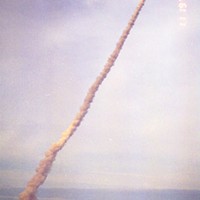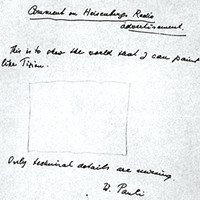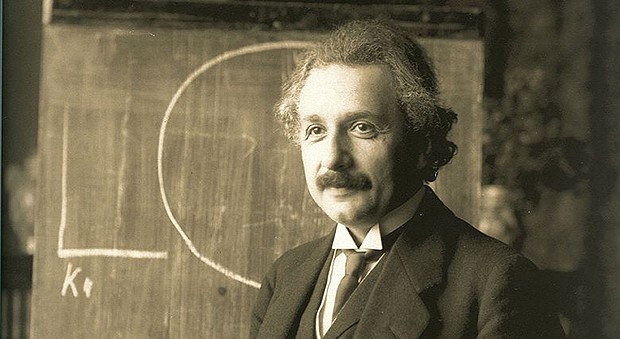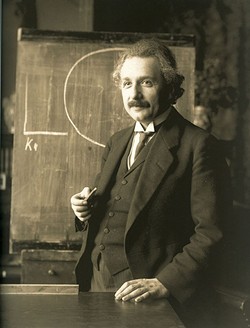[
{
"name": "Top Stories Video Pair",
"insertPoint": "7",
"component": "17087298",
"parentWrapperClass": "fdn-ads-inline-content-block",
"requiredCountToDisplay": "1"
}
]
This is the tale of the high-stakes test of scientific theories that made headlines around the world nearly 100 years ago in the aftermath of World War I, linking the lives of two pacifists on opposing sides of the conflict: German-born theoretician Albert Einstein and English astronomer Arthur Eddington. Einstein, already famous for his groundbreaking 1905 Special Theory of Relativity, published the General Theory of Relativity in 1916.
In a nutshell: Mass causes the "fabric" of space to be warped, which in turn bends light. Instead of Isaac Newton's conception of gravity as "invisible forces at a distance," Einstein's gravity was simply our perception of local mass-caused warping, or "curvature" of the fabric of space. Space, far from being empty, was imbued everywhere with this property of curvature, measurable in the same way one could measure the salinity of a drop of ocean water at any place and depth ("Field Notes," Mar. 7, 2013).
Such a quick summary hardly does justice to the complexity of the General Theory, with its three-dimensional geometry, tensor mechanisms and field equations. The story goes that when a colleague suggested to Eddington, director of the Cambridge Observatory, that only three people in the world understood the theory, he paused before replying, "I'm trying to think who the third person might be."
Following the publication of Einstein's 1916 paper, British Astronomer Royal Frank Dyson realized that the solar eclipse of May 29, 1919 would present an opportunity to test Einstein's revolutionary "light bending" predictions by measuring the deflection of starlight passing very close to — and hence "bent" by — the sun. Normally, of course, we can't see stars close to the sun in broad daylight — except during a total solar eclipse, when the moon covers the bright disk of the sun. The 1919 eclipse was particularly propitious because the sun would be in the bright Hyades star cluster, making for a good photo opportunity.
At the time, few scientists doubted that the sun would bend starlight — Einstein himself had said so in 1910, based on his Special Theory. Light, in this view, has mass, and mass is attracted to mass, per Newton. The mass of the sun would cause the light from stars close to the sun to be slightly bent. How slightly? According to Newton's theory, 0.86 seconds of arc. Measuring that bend would be equivalent to measuring the width of a penny from over two miles away. Einstein's General Relativity, with its curvature of space, predicted just twice that deflection. All that was needed to decide between Newton's then 200-year-old theory of gravity and Einstein's new ideas was to snap a few photos during the eclipse and check whether the sun deflected starlight by Newton's 0.86 or Einstein's 1.75 seconds ... which proved to be a far more difficult project than anyone could have anticipated.
Add to that the drama of the test — confirming the German-born Einstein's theory of gravity and overturning that of Englishman Isaac Newton — being conducted by British astronomers immediately following Britain and Germany's bloody four-year conflict.
Next week we'll look at the huge challenges involved in obtaining and analyzing those photographs.
Barry Evans ([email protected]) admires the scientific neutrality of men like Eddington and Dyson.
Speaking of...
-

Rocket Science
Oct 26, 2023 -

Don't Shoot the Physicist!
Oct 21, 2021 -

Huffman Looks to Abolish U.S. Space Force
Sep 22, 2021 - More »
Comments (2)
Showing 1-2 of 2
more from the author
-
A Brief History of Dildos
- Apr 11, 2024
-
Eclipse!
- Mar 28, 2024
-
The Little Drone that Could
- Mar 14, 2024
- More »
Latest in Field Notes
Readers also liked…
-
Trouble on the Line: The Reality Part 2
- Nov 3, 2022


































